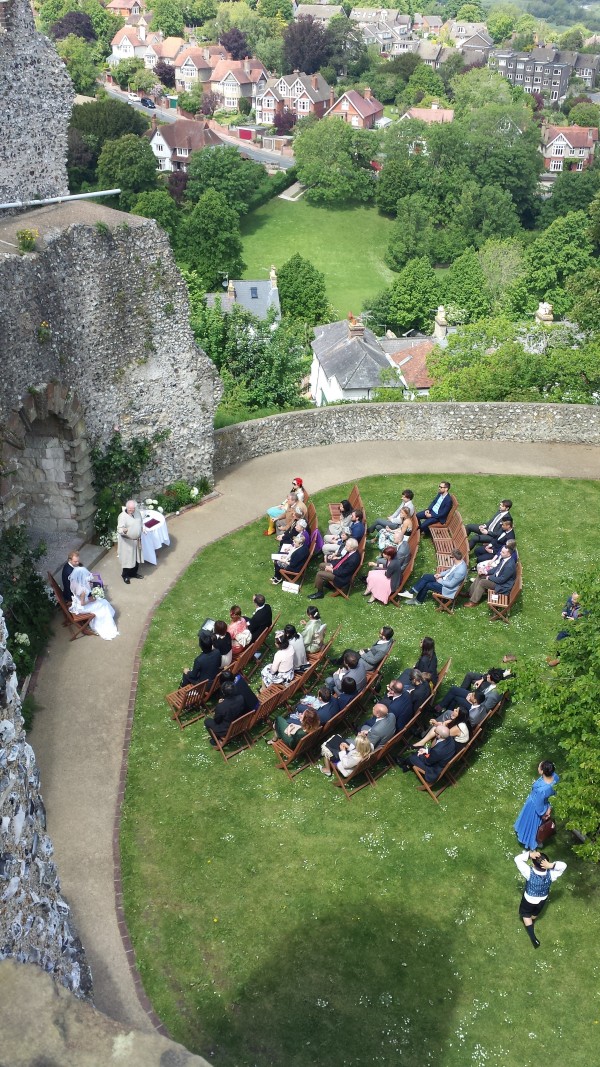Wedding etiquette has changed in the last few years. Traditional ceremonies are no longer the norm.
Couples are often paying for their wedding themselves, rather than relying on their parents. This means they have some independence, and can choose which elements to include. That allows them to change a few things.
Some may be remarrying. They may want to find ways of including children (from the first marriage or the new relationship) and/or other people in their big day. That’s not in the (traditional) script.

The Ceremony
Of course, you are welcome to keep to the old ways for your wedding. However, there are some areas where there is room to manoeuvre, if you prefer.
Bride and groom don’t have to wait till she walks down the aisle to see each other on the day. This is pure superstition. So ignore it, if you want. Indeed, if the ceremony starts in the late afternoon or evening, you might well decorate the venue together beforehand. And why shouldn’t you walk down the aisle at the start, hand-in-hand, if you so choose?
You don’t need a procession at the start (or end) of the ceremony. As couples are marrying later these days, parents might not be around or be fit enough to escort the bride down the aisle. Or maybe it’s a second marriage, and that simply wouldn’t feel appropriate?
Brides do ask brothers, sisters or mothers to accompany them on this walk – or they may even do it on their own.
Bridesmaids usually follow the bride in the UK. However, this is reversed in the US, and, even as a true Brit, I feel there’s a case for that.
Other elements
If you’re paying for the wedding, you should be able to choose who you want as your guests. Including whether it should be child-free.
For the reception, don’t feel obligated to have a top table (or even a sit-down silver-service meal). You can have a table for bride and groom, maybe with two extra chairs for people to ‘drop by’. Depending on the size of the affair, you could even dine as though at a medieval banquet, with everyone at a long table.
Have table names, rather than numbers, so people don’t get huffy because they’re at a “low” table.
Speeches don’t have to take place after the meal (or part-way through it). It might help nervous speakers to get these over with before the meal, so all can enjoy the food and drink! To avoid riots from hungry/thirsty guests, make sure speakers are given a time limit beforehand.
Nowadays, brides may well deliver a speech themselves. Fortunately, this wasn’t the case when I got married, but it is changing nowadays!
As a civil celebrant, it would be remiss of me not to mention that the ceremony can be personalised. Apart from including such things as the couple’s own vows or their story, there is a choice of rituals that can be used to beautify and individualise the occasion.
I am more than happy to advise on ways to make your ceremony stand out – whether traditionally or with a modern slant.
